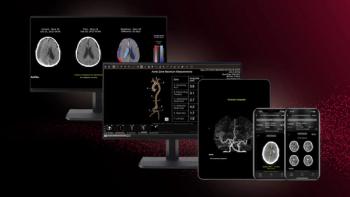
CT in Emergency Department Saves Time
The time it takes for CT scans, from order to reading, is influenced by the location of the scanner in relation to the ED.
Computed tomography scanners in the emergency department (D) reduce time to scan completion, radiological interpretation, and patient disposition, according to a study published in the
Researchers from Canada and the United States performed a retrospective study to evaluate whether having a CT scanner in the ED improved workflow and impacted patient outcome.
A total of 2,142 consecutive, acute thoracic, abdominal, and pelvic imaging requests from two ED hospital campuses were assessed. At one campus, the CT scanner was in the ED, while the CT scanner in the other campus was located in the radiology department, which was 300 meters away from the ED. The images were obtained in the period between August 1, 2012 and October 31, 2012.
The researchers looked at three milestones:
• Time of reception of CT requisition to the time the CT scan was initiated (Time 1)
• Time from CT scan initiation to the time the CT was reported preliminarily by a resident/fellow, or verbally reported by staff to the ED (Time 2)
• Time the CT requisition was received to the time of final patient disposition (Time 3)
The results showed that there was a decrease in the time needed for the scans performed with the ED CT scanner with 16 minutes, 15 minutes, and 19 minutes for Times 1, 2, and 3 respectively. Significant differences were also seen in morning and overnight shifts, the researchers noted, as well as for CT reporting times in higher radiology levels of training (20 minutes and 18 minutes for staff and PGY 5, respectively). No significant differences were seen for hyperacute patients.
The researchers concluded that CT proximity to the ED does strongly correlate with lower scanning times overall. “This finding is important for hospitals that are trying to meet benchmarks or improve efficiency in the ED, as the presence of an ED CT scanner department could help meet these goals,” they wrote. “Future work should include evaluation of the degree of utilization and overutilization, and the frequency of adherence to published imaging guidelines, when a CT scanner is more readily available.”
Newsletter
Stay at the forefront of radiology with the Diagnostic Imaging newsletter, delivering the latest news, clinical insights, and imaging advancements for today’s radiologists.




























